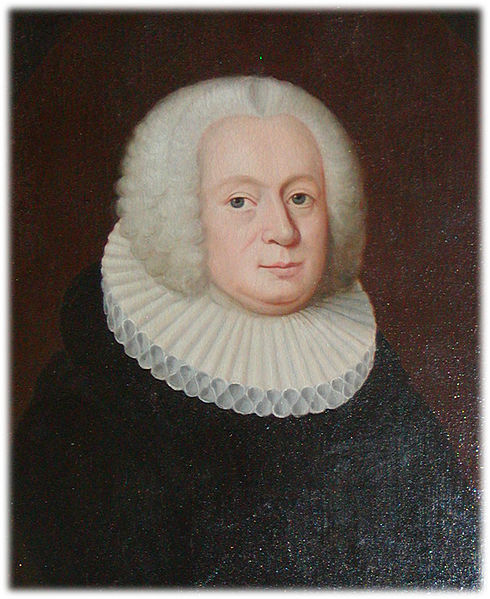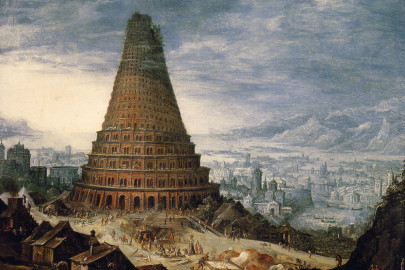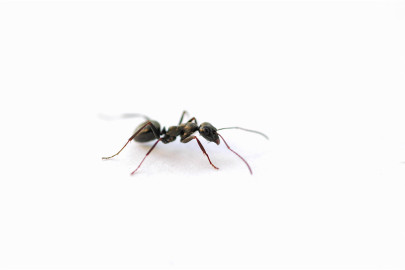This week Frank’s addiction to Scandinavian crime drama leads him to discover a Danish bishop with some highly unusual interests…
Like absolutely everybody else throughout the land – with the sole exception of Nige – I have become enamoured of Scandinavian crime fiction. That is why, the other day, I picked up a cheap paperback copy of Headhunters by Jo Nesbo and have read about half of it at one sitting. It rattles along. I found myself diverted by this passage:
The second [thing that caught my attention] was a quotation from what are known informally as “Pontoppidan’s Explanations” in which he declares that a person is capable of killing another person’s soul, infecting it, dragging it down into sin in such a way that redemption is precluded.
As soon as I felt able to tear myself away from Headhunters, about ninety pages later – I did say it rattles along – I made a cup of tea and devoted myself to discovering what I could about Pontoppidan and his Explanations. The first thing I learned was that no human being has ever resembled a poodle or a pompom as closely as Erik Pontoppidan (1698-1764).
In the Wikipedia, he is listed in the following categories: Danish theologians, Danish bishops, Danish ornithologists, Danish naturalists, Norwegian bishops, 18th-century Lutheran bishops, People from Aarhus. That gives us a reasonably comprehensive picture. As for the Explanations, these appear to be one of his most important theological works, a 1737 official state church explanation of the Lutheran catechism. One might think that makes for rather dry reading, but the part alluded to by Jo Nesbo suggests otherwise. I may have to see if there is an English translation available and pore over it for further references to murder and infection and sin and eternal damnation.
As with so many clergymen of the era, Pontoppidan was also an enthusiastic naturalist and antiquarian. He compiled, in 1763-64, The Danish Atlas, a detailed and ambitious description of Denmark based on information gathered from clergy around the country. His Natural History of Norway (1752–1753), was a description not only of the flora and fauna of the country, but also of the peasant population, their ways of living and thinking, based upon close observation. It is thanks to Pontoppidan that much folkloric material has been preserved.
Among his other works were a standard Danish hymn book, a guide for vicars to help eradicate superstition and reduce devotion to Catholic relics among the peasantry, a four-volume history of the Danish church, and a collection of epitaphs transcribed from tombstones.
Of particular interest, at least to me, is that Pontoppidan is one of the earliest sources for our knowledge of that ferocious sea monster, the kraken. In the Natural History of Norway he gives an extensive description of the beast and makes a number of claims, including that the kraken is so enormous it is sometimes mistaken for an island, and that the greatest danger to sailors comes not from the creature itself but from the mighty whirlpool it leaves in its wake. Not that the kraken does not have great destructive power, as Pontoppidan writes “It is said that if [the creature’s arms] were to lay hold of the largest man-of-war, they would pull it down to the bottom”.
The image of the kraken dragging a ship down to the bottom of the sea is startlingly similar to the image, in the Explanations, of the soul-murderer dragging the infected victim down into sin. One wonders what tormented phantasms were going on inside Pontoppidan’s head, surrounded by that pompom of snow-white hair and the crisp white ruff.













Ponty’s home town of Aarhus, now well known for extruding (Wavin, plastic pipe.) Very apt, as Ponty is considered by the Norgies to have been a bit of a piss taker. As my old mate Tage Bottum used to say “we’re not just famous for melting polyethylene you know.”
Has anyone noticed the marked similarity between The Bridge and Lark Rise. Candleford is, apparently “eight moile from Lark Roise” remarkable then that the journey on foot only took seven minutes. The bridge, the Scandinavian booze cruisers delight, is traversed in five minutes by those two cops, Milla Jovovich and Worzel Gummidge. Can you imagine that, anyone in their right mind forking out the dosh and building a bridge to Malmo, the town where the Swedes never smile, mein gott, it was our money, via Brussels.
A few years ago I used that bridge to get to the beaches of Skane, giving a smiley wave to Malmo as I passed. It’s a bit like New England down there with clapboard houses and sand dunes. But no kraken. The biggest surprise was how warm the Baltic is in August.
An old friend frequently visited Malmo, in a converted MTB, buying optics and special steel, parking the boat next to the German armed trawlers, also buying optics and special steels from the Swedes. One November night after a running battle with the Germans in the Skagerrak he had to swim ashore, the Norwegian shore. As he remarked “thank god for that, couldn’t stand the Swedes”. The Norwegian resistance ferried him home.
Nesbo? Larsson? It’s all beyond me. But I do know that Tennyson wrote a poem called “The Kraken”, and referred to Pontoppidan’s account of the beast. The poem is worth seeking out for its description of an undersea world in which “Unnumbered and enormous polypi Winnow with giant arms the slumbering green”.
a poem that we relished at school! I even read it in a public speaking competition once
Did you win?
no, I think they gave the prize to some bloke over-emoting ‘dulce et decorum est’ 🙁
Bloody war poets.